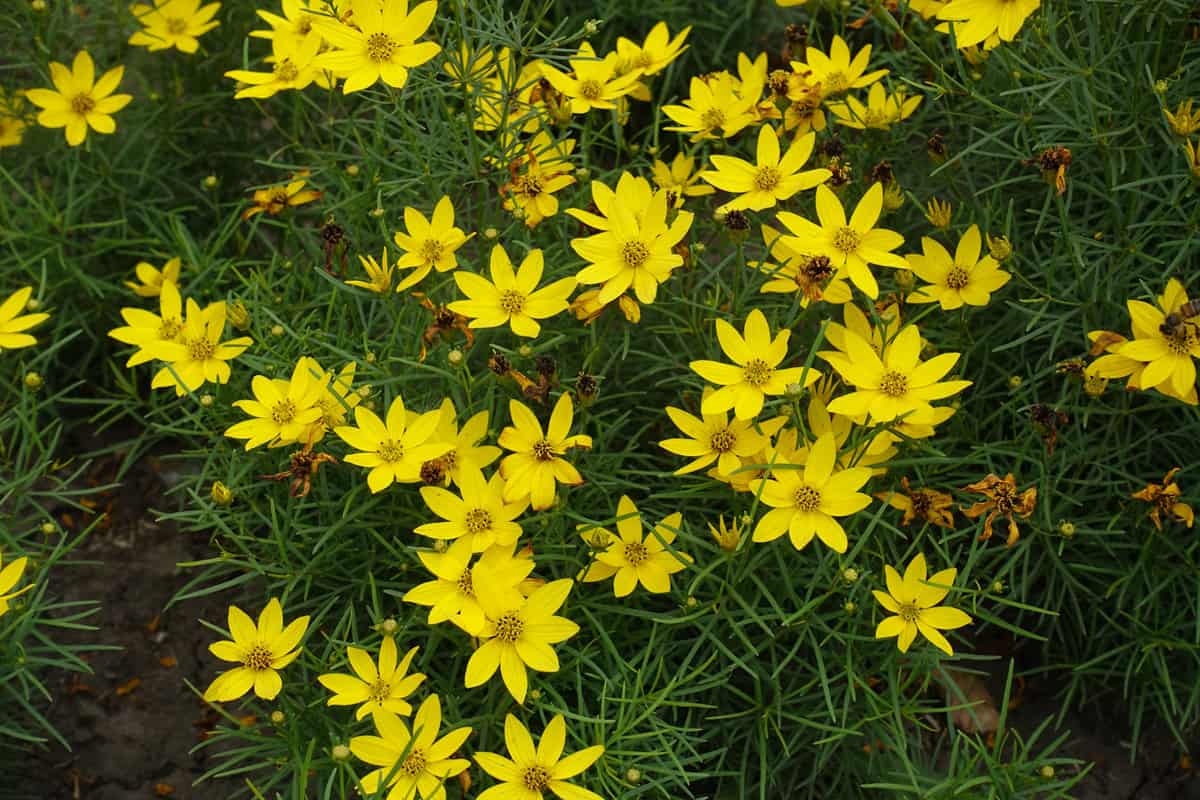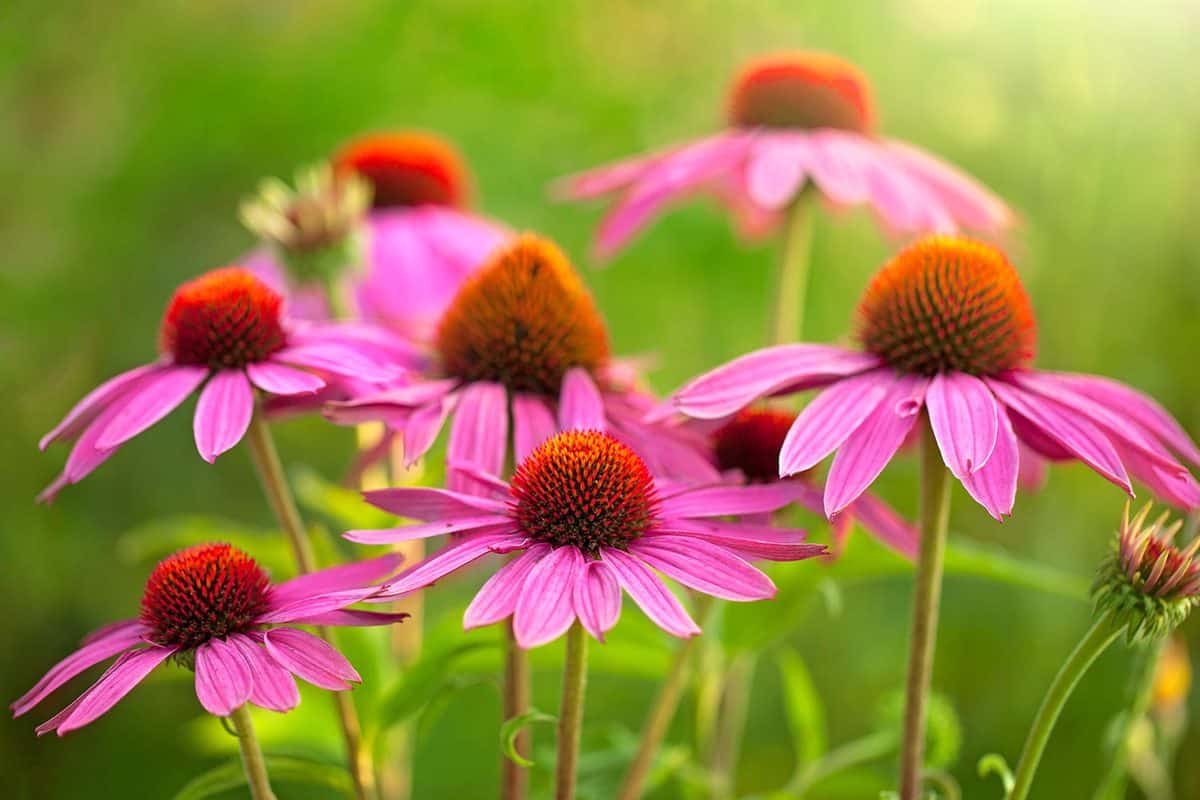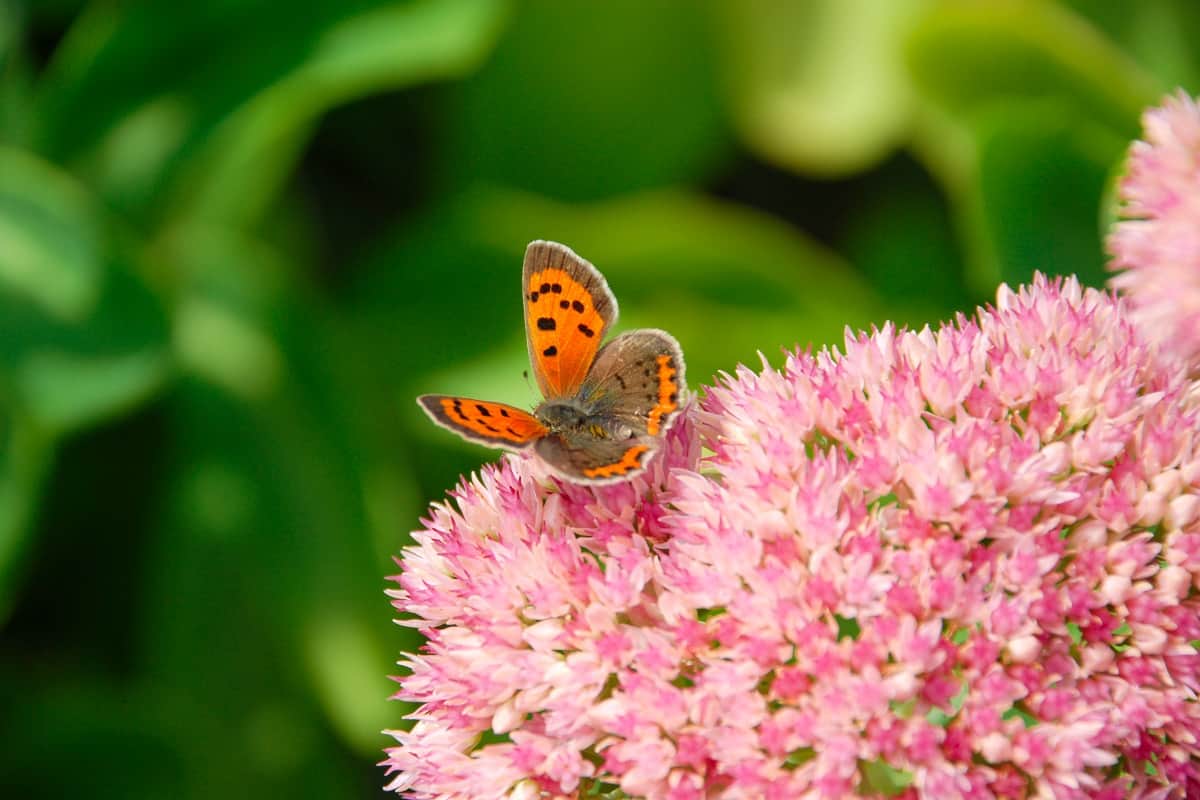Gardening enthusiasts often seek low-maintenance plants that can thrive in sunny conditions.
Small perennials are a popular choice for those looking to create a vibrant, colorful garden without much effort.

This article will focus on the top 4 low-maintenance small perennials that can handle direct sunlight and will bring delight to any garden.
By incorporating these plants into your garden, you can enjoy a vibrant outdoor space that requires little maintenance while still providing a stunning visual display throughout the season.
You might also like: 19 Dwarf Evergreen Shrubs For Full Sun
Understanding Perennials and Sun Requirements
Perennials are ideal plants for your garden because they come back year after year, requiring minimal maintenance.
When choosing the best small perennials for sun, it's essential to understand their sun requirements, as this determines the success of their growth and flowering.
Full sun means a plant needs at least 6-8 hours of direct sunlight daily to thrive. An example of low-maintenance full sun perennial is the Decadence series of Baptisia, or False Indigo.
Partial sun or partial shade plants requires more than 4 hours and less than 6 hours of sunlight per day. These plants can handle some afternoon shade, allowing them to succeed in less sunny areas.
When selecting perennials for your sun-drenched garden, you should also consider factors such as soil type, climate, and available space.
Additionally, planning your garden's layout as a combination of plants with varying sun requirements can ensure a healthy, diverse, and visually appealing landscape.
Top 4 Small Perennials for Sun (Low-Maintenance options)
A beautiful garden can be achieved without too much effort. Here are some low-maintenance yet stunning perennials that thrive in full sun and will elevate the visual appeal of your garden
Learn more: 11 Pink Flowering Perennials to Add to Your Garden
1. Coreopsis
Coreopsis is a popular choice for a low-maintenance, sun-loving perennial.
These cheerful, daisy-like flowers come in a variety of colors such as yellow, orange, and red, making them a vibrant addition to any sunny garden.

Coreopsis plants are known for their drought tolerance and their ability to attract pollinators like butterflies and bees.
They thrive in full sun, which means it needs at least 6-8 hours of direct sunlight each day.
Some species of coreopsis can also tolerate partial shade, but for the most vibrant blooms and healthiest plants, full sun is best.
With compact growth habits ranging from 12 to 18 inches, they make excellent border plants or fillers in mixed beds.
To keep coreopsis looking its best, deadhead spent blooms throughout the growing season.
2. Daylilies
Daylilies are an excellent choice for low-maintenance gardens, as they can tolerate a variety of conditions including drought and poor soil. They usually grow 1 to 4 feet tall.
![A close up photo of daylily on a sunny day, Do Deer Eat Daylilies? [And How To Prevent That]](https://gardentabs.com/wp-content/uploads/2020/09/A-close-up-photo-of-daylily-on-a-sunny-day.jpg)
They produce beautiful blossoms in various colors such as yellow, pink, and purple, lasting for about a day, hence their name.
Daylilies enjoy full sun but can also survive in partial shade. Divide the plants every few years to ensure their continued growth and beauty.
3. Echinacea
Echinacea, also known as coneflower, is a resilient small perennial that requires little attention. They bloom from mid-summer to mid-fall with vibrant colors like purple, pink, and white.

Echinacea plants typically grow to a height of 2 to 4 feet, depending on the specific variety.
Some dwarf varieties may be shorter, around 1 to 2 feet tall, while other, larger varieties can reach up to 5 feet.
They grow well in full sun but can tolerate light shade, and their drought-resistant nature makes them a beloved choice for sunny gardens.
As a bonus, these flowers are also known to attract butterflies and bees, bringing an additional sense of life to your garden.
You may also like: 39 Plants That Like Full Sun And Heat
4. Sedum
Sedums have a variety of shapes and sizes, it fits well in garden beds, rock gardens, or as a ground cover.
Its flowers bloom in late summer or early fall and come in shades of pink, red, and yellow.

Sedum 'Autumn Joy', a popular upright variety, can grow up to 2 feet tall, while creeping types like Sedum spurium are much shorter, generally reaching heights of around 4 to 6 inches.
They are incredibly sun-tolerant and do best in full sun conditions. They can also tolerate partial shade, particularly in areas with hot summers, but they may not flower as profusely and their foliage color may be less vibrant.
Their ability to grow in poor soil makes them an excellent choice for areas that get intense sunlight.
Sedum's fleshy leaves store water, so they only need occasional watering and can survive dry conditions.
To maintain the health and density of your Sedum plants, simply divide them every 3-4 years.
Final Tips for Planting and Care
When planning your garden, consider the following tips to ensure success with low-maintenance small perennials for sun:
- Prepare the soil: Make sure to have well-drained soil for your plants. Amend it with compost or other organic matter if needed to improve its quality. Healthy soil will promote root growth and overall plant health.
- Choose the right plants: Select the appropriate perennials for your region, including those that are drought-tolerant, and hardy in your USDA plant hardiness zone.
- Plant spacing: Give the plants enough room to grow and spread. Check each plant's specific spacing requirements before planting.
- Water wisely: Most of our low-maintenance perennials are drought-tolerant, but they still need water, especially during the establishment phase. After that, you can reduce the frequency of watering.
- Apply mulch: Mulching around the plants helps conserve moisture, suppress weeds, and regulate soil temperature. This will save you time and effort in the long run.
- Feed the plants: Even low-maintenance plants can benefit from a little care. Apply a slow-release, organic fertilizer in spring to support healthy growth.
- Prune when needed: Some perennials, such as coreopsis, may require deadheading or occasional pruning to encourage more flowering and maintain a tidy appearance.
Remember that while our chosen plants are low-maintenance, no garden is entirely maintenance-free.
However, by following these tips, you will be able to enjoy a beautiful, thriving garden with minimal effort and upkeep.
In Closing
When it comes to finding the best small perennials for sunny locations, consider these top 4 low-maintenance options to brighten up your garden.
Each one brings its unique charm and ease of care, perfect for novice and experienced gardeners alike.
By selecting a few of these top options, you'll enjoy a vibrant, thriving garden that brings joy to your outdoor space!
